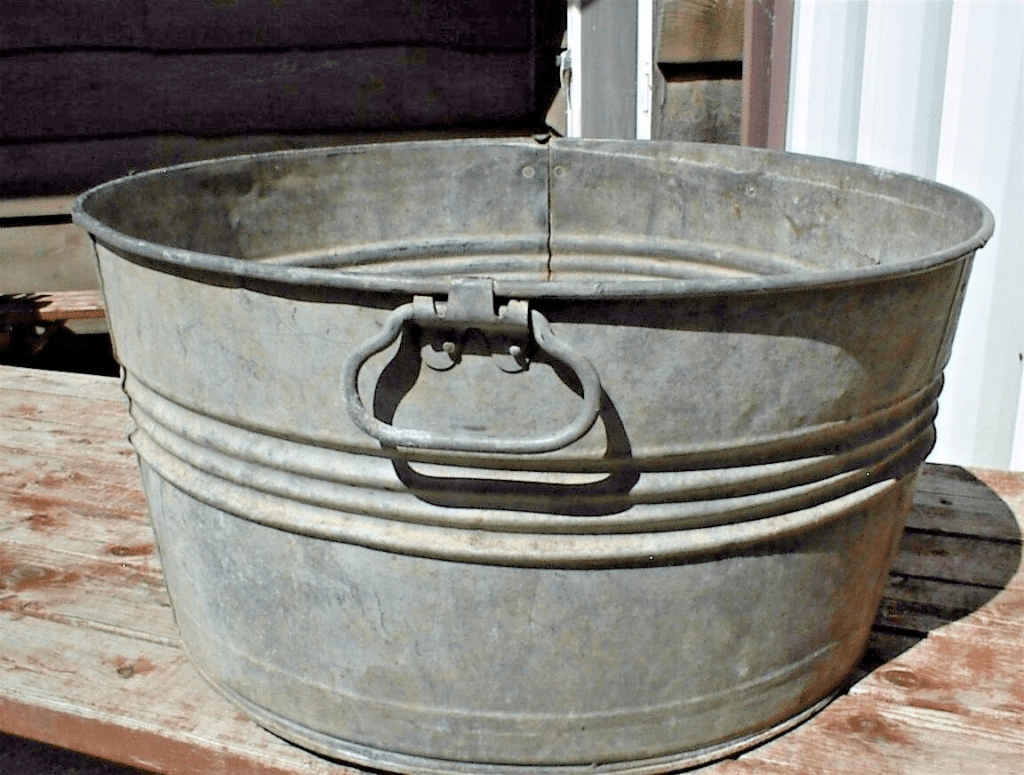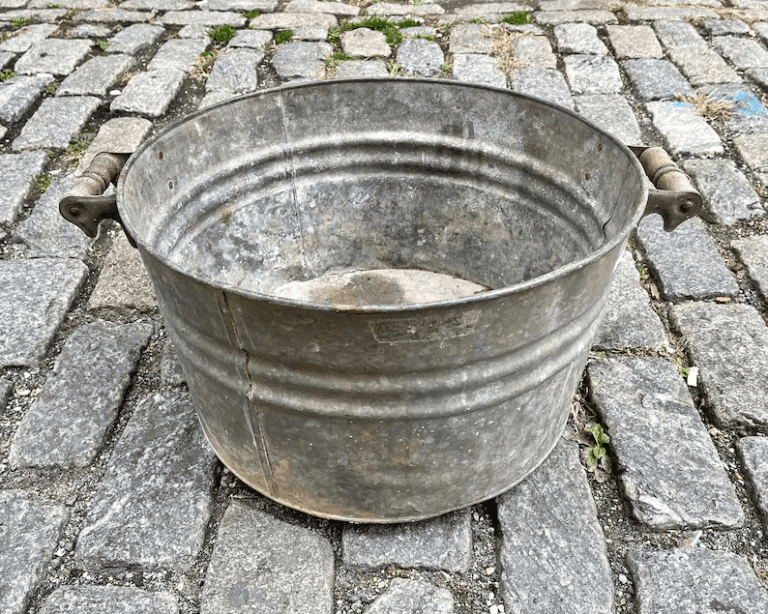Galvanized wash tubs hold a fascinating place in history. These durable, multi-purpose containers were indispensable household items for decades, embodying practicality and resilience, especially for families navigating upheaval during and after World War II. Beyond their everyday utility, galvanized wash tubs symbolize the resourcefulness of past generations, offering a poignant reminder of how simple tools helped people endure and thrive.
The Origins of Galvanized Wash Tubs

Galvanized wash tubs emerged in the late 19th century as an innovation in household utilities. Crafted by coating steel or iron with zinc, these tubs were resistant to rust and built to withstand heavy use. Their durability and versatility quickly made them a staple in homes across the world.
The Science of Galvanization
The process of galvanization, first developed in the early 19th century, involves dipping iron or steel into molten zinc. This protective coating prevents rust, extending the lifespan of the metal. The result? A product that could endure the test of time, whether used for washing laundry, storing water, or countless other tasks.
Popularity in Early 20th-Century Households
As homes became more organized and tasks more specialized, galvanized tubs gained prominence. They were practical, affordable, and essential for chores like washing clothes, bathing, and even food preparation. Their rugged design made them a reliable tool for families, especially in rural or resource-limited areas.
Galvanized Wash Tubs During Migration and War
The true value of galvanized wash tubs shone during times of crisis, such as World War II and its aftermath. Millions of families displaced by war carried these tubs with them as they sought safety and stability in new lands. For many, these tubs were more than just a utility—they were a lifeline.
Essential Tools in Migrant Camps
In the aftermath of World War II, migrants often lived in camps with limited resources. Galvanized wash tubs were invaluable in these settings. Families used them to wash clothes, bathe children, and collect water. These tubs offered a semblance of routine and normalcy amidst uncertain circumstances.
The Pierzak Family’s Journey
Take the Pierzak family, for example. Displaced from Poland during World War II, they carried their galvanized tub on their migration to Australia in 1950. For the Pierzaks, the tub became a cornerstone of daily life—serving as a bathtub, laundry basin, and even a container for food storage. It symbolized resilience and adaptability as they rebuilt their lives in a new country.
The Everyday Uses of Galvanized Wash Tubs
The beauty of galvanized wash tubs lies in their versatility. These sturdy containers proved indispensable in countless ways, adapting to the needs of households in various circumstances.
Laundry Made Simpler
Before washing machines became ubiquitous, laundry was a labor-intensive chore. Paired with a washboard, galvanized tubs allowed families to scrub clothes clean efficiently, even in the absence of running water.
A Makeshift Bathtub
For families without indoor plumbing, these tubs doubled as bathtubs. Parents bathed children in them, and adults used them for quick washes. Their size and durability made them a practical solution for personal hygiene.
Food Preparation and Storage
In rural settings, galvanized tubs served as vessels for soaking fruits, brining meats, or storing grains. Farmers even used them to water livestock, showcasing their versatility beyond the household.
Emergency Water Storage
In areas prone to droughts or water shortages, these tubs acted as emergency reservoirs. Their rust-resistant design ensured that water remained clean and usable over time.
The Decline and Repurposing of Wash Tubs

As technology advanced, galvanized wash tubs began to fade from daily use. Indoor plumbing, washing machines, and modern storage solutions replaced them in most households. However, their practicality and vintage charm have allowed them to find new life in creative ways.
A Shift to Modern Convenience
By the mid-20th century, modern appliances had largely replaced galvanized tubs. Washing machines eliminated the need for manual scrubbing, and indoor plumbing rendered portable tubs unnecessary. Despite this, their legacy persisted, especially in rural areas or as emergency backups.
Modern Repurposing Trends
Today, galvanized tubs are enjoying a resurgence as decorative and functional items. They’re often repurposed as:
- Garden Planters: Their rustic aesthetic makes them ideal for growing flowers, herbs, or vegetables.
- Outdoor Decor: Used as beverage coolers at parties or filled with lights, they add a charming touch to gatherings.
- DIY Furniture: Creative homeowners have transformed these tubs into unique tables, stools, or storage containers.
The Symbolism of Galvanized Wash Tubs

These humble tubs represent more than utility—they embody the resilience and resourcefulness of past generations. For displaced families and migrants, they were tools of survival and continuity. They bridged the gap between old and new worlds, helping families adapt to unfamiliar environments while preserving cherished routines.
A Link to the Past
Galvanized wash tubs are tangible connections to history. They tell stories of hard work, migration, and adaptation. Their continued presence in homes and collections serves as a tribute to the ingenuity of those who relied on them.
A Reminder of Simpler Times
In an era of convenience, these tubs remind us of a time when every household item had to serve multiple purposes. They highlight the creativity and perseverance required to make do with limited resources.
Conclusion
The galvanized wash tub stands as a powerful symbol of human resilience and adaptability. From its origins as a practical household item to its role in helping families navigate war, migration, and hardship, this simple tool holds a legacy of strength and resourcefulness. Today, whether repurposed as a garden planter or displayed as a historical artifact, galvanized wash tubs continue to remind us of the enduring human spirit and the ingenuity of the past.


